Wireless Application Protocol Architecture plays a key role in wireless networks.
- An open, international standard that makes it simple for wirelessly enabled mobile users to access and engage with internet content and services.
- The wireless sector of WAP pioneered this concept. The goal of this standard was to enable wireless devices, like cell phones, to present online information.
- WAP stands for Wireless Application Protocol.
- WAP is an application communication protocol used to access information and services. It was developed for micro browsers and is intended for portable devices like mobile phones. It was derived from Internet standards.
- Web apps may be made for mobile devices thanks to WAP.
- WAP employs WML as its mark-up language rather than HTML. A program that uses XML 1.0 is known as WML.
- Contributing members are still developing the WAP standards, and with the help of interoperability testing and fully working WAP-enabled devices, they have elevated WAP to the forefront of the mobile data industry.
- WAP’s primary goal is to give tiny, portable devices, such as cell phones and PDAs, an online experience.
Table of Contents
Why is WAP used?
- To make it possible for mobile consumers to quickly and easily receive pertinent information and services.
- Devices that employ WAP include smartphones, pagers, mobile phones, two-way radios, and communicators, ranging in price from entry-level to luxury.
- WAP FUNCTIONS WITH MOST WIRELESS NETWORKS, INCLUDING FLEX, TETRA, DECT, GSM, PDC, PHS, TDMA, CDPD, AND CDMA.
- WORKING SYSTEMS SUITABLE FOR WAP: WAP is both an application environment and a communications protocol. WAP is OS-independent, meaning it may be used on any operating system.
- Any operating system, such as Palm OS, EPOC 32, Windows CE, FLEXOS, OS/9, Java OS, etc., can be used to build it. Even across several device families, it offers service compatibility.
Wireless Application Protocol ARCHITECTURE:
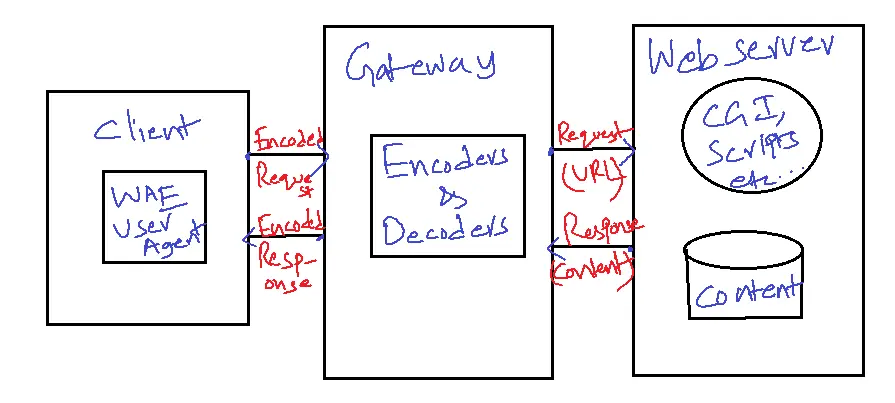
Wireless Application Protocol Architecture Requirements:
- Wireless Application Protocol Architecture utilizes current standards wherever you can
- Describe a tiered, expandable, and scaleable building Wireless Application Protocol Architecture
- Complement as many wireless networks as possible feasible Wireless Application Protocol Architecture
- Make adjustments for narrow-band carriers with high
- latency Optimize for optimal device use resources
- Wireless Application Protocol Architecture Offer assistance with safe software and dialogue
Sample WAP Stacks:

Mobile-Originated Example of Wireless Application Protocol Architecture:
The request from the mobile device is sent as a URL through the operator’s network to the Wireless Application Protocol Architecture gateway, which is the interface between the operator’s network and the Internet as shown in the figure below
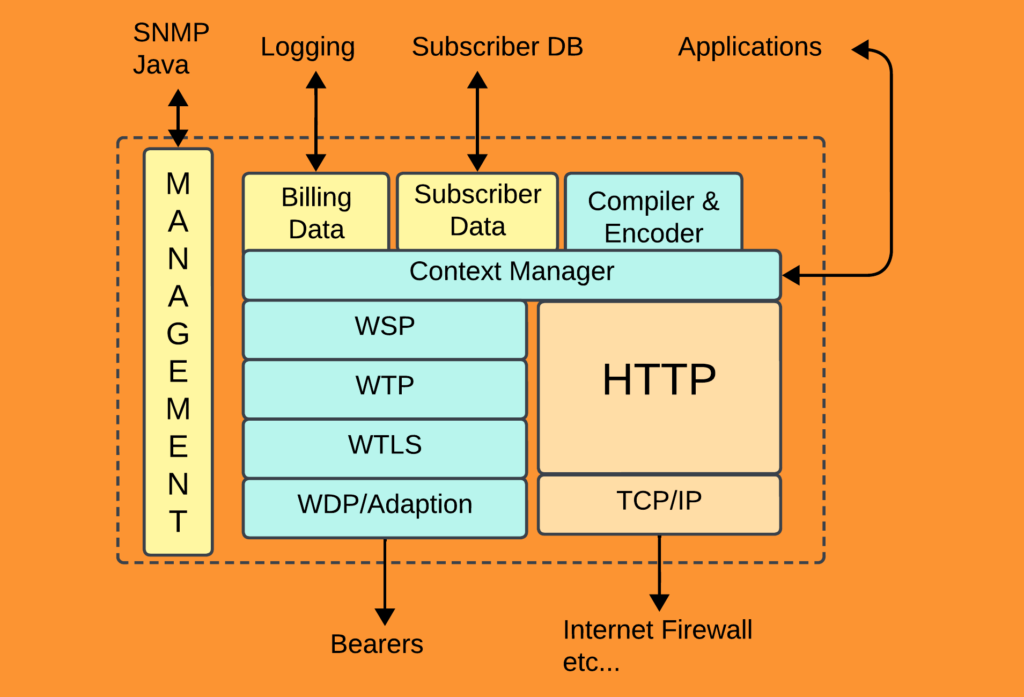
WORLD-WIDE-WEB MODEL:
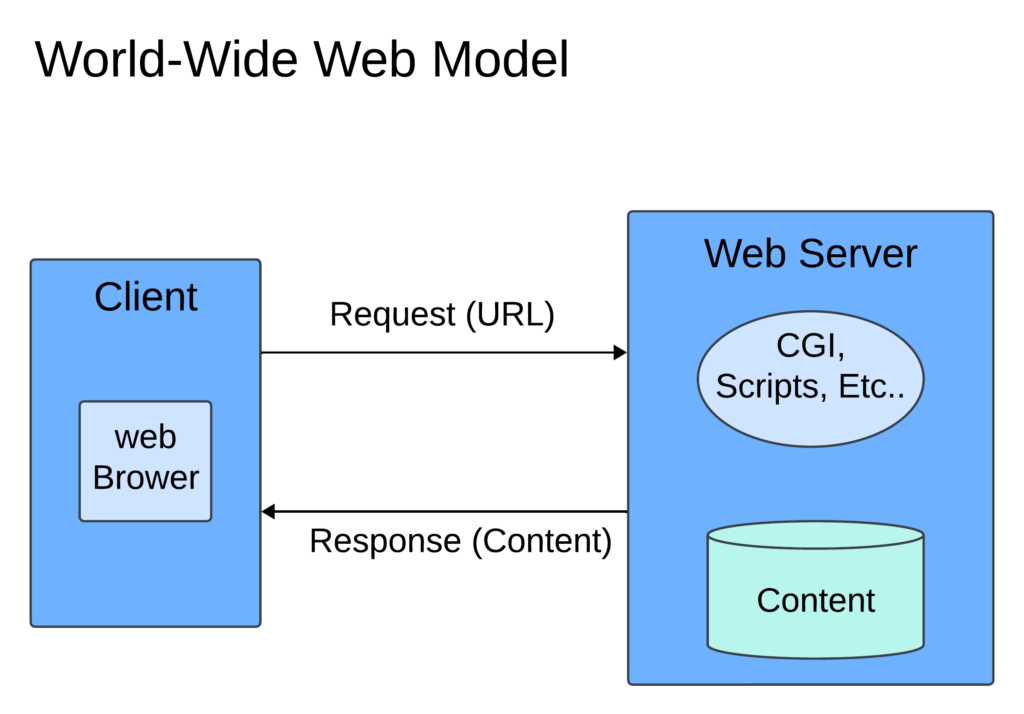
WAP Programming Model:
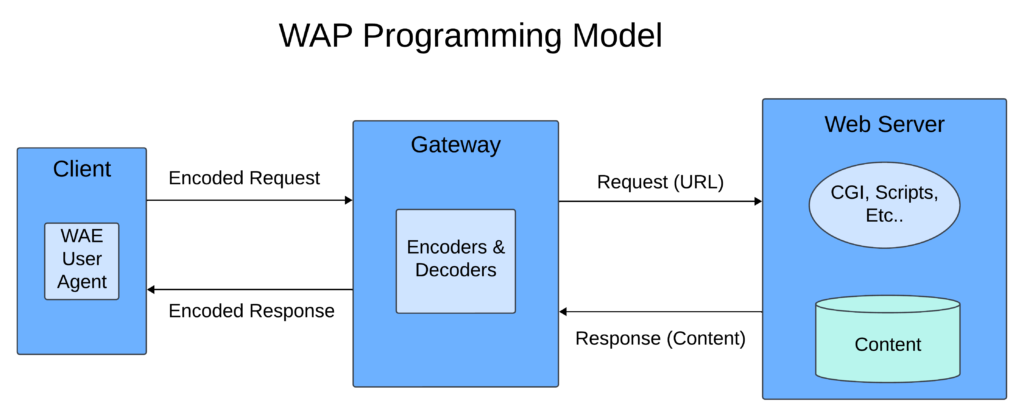
- WAP Device: Wireless Application Protocol content and applications are accessed through this device, which could be a PDA or a portable data terminal.
- WAP Client: An organization that uses a Wireless Application Protocol Gateway to access the Internet for content. Typically, this is the WAP Browser.
- WAP Content/Origin/Application Server: A network component that houses data or web/WAP apps.
- WAP Proxy: In the network, it functions as both a client and a server. Usually Requests from the WWW protocol stack are translated by a protocol gateway.
- Material encoders and decoders: minimize the data transferred over the network by converting WAP material into compact encoded forms.
- It empowers developers to build applications and content leveraging familiar web technologies such as CGI scripting, and seamlessly host them on standard web servers.
- WAP Gateway: Connects distinct networks, and appears as original server to clients.
- WAP Browser: A piece of software that runs on a WAP device that determines how to display WAP content received from the internet by interpreting it.
Wireless Application Protocol Architecture Network Example:
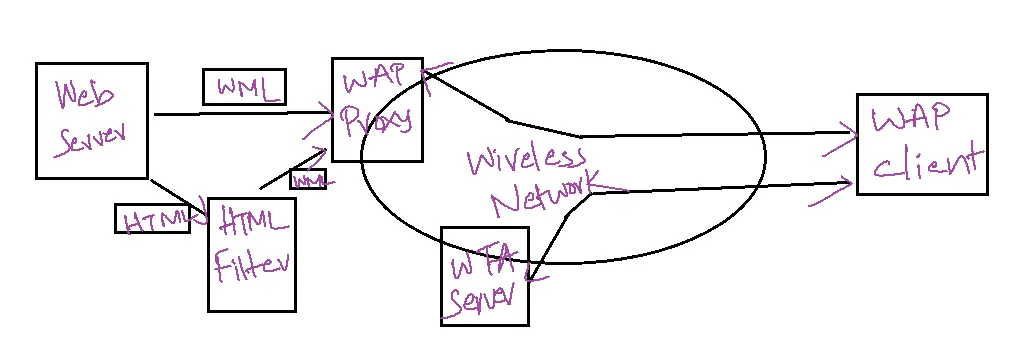
WWW Protocol Stack:

Components of Wireless Application Protocol Architecture:
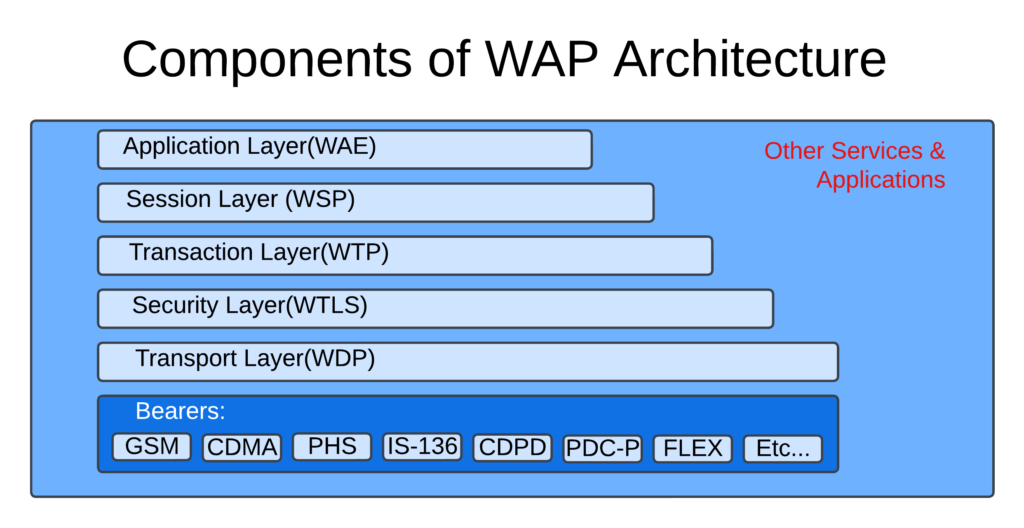
Wireless Application Environment:
- The Wireless Application Environment is a hybrid platform that combines the strengths of the World Wide Web (WWW) and mobile technology to enable phone calls and other wireless applications.
- It describes the phone’s user interface. It includes Wireless LAN (WLAN) and WML Application for Telephony).
- The main goal is to be interoperable surroundings.
- When used in conjunction with an appropriate network, WAE’s micro-browser (client software created to address issues with portable, mobile devices that allows wireless access to services like Internet information) and server environment offer the following: WTA, WML, WML script, and content formats.
Wireless Session Protocol:
- For streamlined data exchange between applications, WAP relies on the efficient session management provided by the WSP layer.
- Application layer for two session services with a unified interface
- A connectionless service that functions atop a secure or non-secure datagram service (WDP) – A connection-oriented service that runs above the transaction layer protocol (WTP)
- Designed with long latency and low bandwidth carrier networks in mind
Wireless Transaction Protocol(WTP):
The datagram service offered by WDP is made more reliable by the transaction support given by the WAP transaction protocol (WTP) layer.
The lightweight, transaction-oriented protocol is the Wireless Transaction Protocol.
Three types of transaction services
- One-way requests that are unreliable
- one-way requests that are reliable
- two-way request-reply transactions that are trustworthy
Wireless Transport Layer Security:
Optimized for usage across narrow-band communication channels, the Transport Layer Security (TLS) protocol is the industry standard.
Its features include:
- Data security
- privacy
- authentication
- denial-of-service defense
Wireless Datagram Protocol:
- The WDP’s Transport layer handles message transmission and reception across various bearer networks, including SMS, USSD, CSD, CDPD, IS-136 packet data, and GPS.
- Functions above the data-capable carrier services that different types of networks support.
- Offers a shared interface for the higher layer protocols, allowing them to operate without reliance on the underlying wireless network.
Bearers:
- Different service quality levels in terms of throughput, error rate, and latency
- WAP protocols are made to make up for or put up with these variations in service quality.
- The WDP standard enumerates the supported carriers and the methods by which WAP protocols can be performed over each bearer.
Future of Wireless Application Protocol:
Will WAP meet third-generation wireless standards?
- Indeed, WAP was created to be as unaffected by the underlying network technology as feasible.
With 3G networks having more capacity, is WAP still required?
- The cost of bandwidth does not decrease to zero even as capacity increases. These expenses are due to increased network loads, more RF spectrum utilization, higher power consumption in the terminals, and higher prices in the radio sections.
- Furthermore, 3G networks still adhere to the original design limitations of WAP, which included sporadic coverage, tiny displays, low power consumption, broad scalability across carriers and devices, and one-handed usage.
- In conclusion, we may anticipate a consistent rise in the bandwidth employed by application users
- As a result, device and network resource optimization for wireless contexts is still necessary. We expect WAP to evolve and become more compatible with current multimedia applications.
WAP in the Competitive Environment:
- Subscriber identification module (SIM) toolkit: Smart cards or SIMs are widely utilized in cellular devices, and several service industries have adopted this technology.
- Windows CE: This multitasking, multithreaded operating system from Microsoft was created to be integrated into or utilized with mobile devices alongside other devices with limited space.
- The JavaPhoneTM API is being incorporated into a JavaTM virtual machine on the handset, alongside the development of PersonalJavaTM by Sun Microsystems.
- With the ability to develop mobile phones with additional capabilities that can be downloaded via the Internet, NEPs will be able to provide users with the option to upgrade their phones without needing to replace them.
Benefits of WAP:
1. Convenience: WAP empowers mobile users with the freedom to access internet content and applications from anywhere, at any time.
2. Accessibility: WAP enables people with mobility impairments to access the internet and mobile applications.
3. Cost-Effective: WAP reduces the need for physical infrastructure, making it a cost-effective solution for accessing the Internet.
Limitations of WAP
1. Slow Data Speeds: WAP data speeds are generally slower than traditional internet connections.
2. Limited Content: WAP content is often limited and optimized for small screens, which can be restrictive.
3. Security Concerns: WAP security features may not be as robust as traditional internet connections.
Applications of WAP
1. Mobile Internet: Wireless Application Protocol enables mobile devices to access the Internet, browse websites, and access online services.
2. Mobile Banking: Wireless Application Protocol facilitates mobile banking, allowing users to check balances, transfer funds, and pay bills.
3. Mobile Commerce: Wireless Application Protocol enables mobile commerce, allowing users to make online transactions, purchase products, and access services.
4. Location-Based Services: Wireless Application Protocol supports location-based services, providing users with location-specific information and services.
5. Mobile Email: WAP enables mobile email, allowing users to send and receive emails on their mobile devices.
Conclusion
Wireless Application Protocol (WAP) is a technology that enables mobile devices to access the internet and mobile applications wirelessly. Despite its limitations, WAP has undeniably transformed mobile access to information and communication. Despite newer technologies, WAP’s legacy and continued use demonstrate its enduring importance in the mobile internet sphere.
FAQs
1. What is WAP and its architecture?
- WAP, or Wireless Application Protocol, is a technical standard for accessing information over a mobile wireless network.
- Its architecture comprises several layers, enabling communication between mobile devices and the Internet.
2. What are the key components of WAP architecture?
- Client: The mobile device running the WAP browser or application.
- Gateway: A server that translates WAP requests into standard web protocols (like HTTP) and vice versa.
- Origin Server: The web server hosting the content or application.
3. How does WAP differ from traditional web architecture?
- Optimized for mobile: WAP uses a lighter-weight markup language (WML) and protocols (WSP, WTP) to suit early mobile devices’ limited bandwidth and processing capabilities.
- Gateway: WAP includes a gateway to bridge the gap between mobile networks and the internet.
4. What are the layers in the WAP protocol stack?
- Wireless Application Environment (WAE): Provides the application framework and user interface.
- Wireless Session Protocol (WSP): Handles the interactions between the client and the server.
- Wireless Transaction Protocol (WTP): Handles reliable and secure transactions.
- Wireless Transport Layer Security (WTLS): Provides security for data transmission.
- Wireless Datagram Protocol (WDP): Adapts to different bearer networks.
5. Is WAP still relevant today?
- Legacy technology: WAP has largely been replaced by more modern technologies like HTML5 and responsive web design, which enable better mobile browsing experiences.
- Niche applications: WAP might still be found in some legacy systems or specific applications where bandwidth and device constraints remain.
